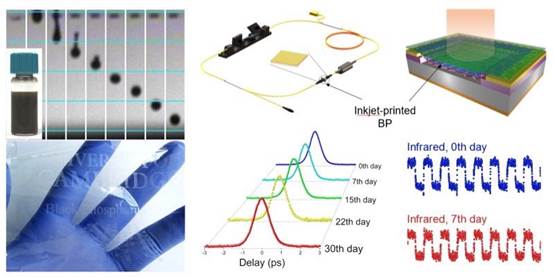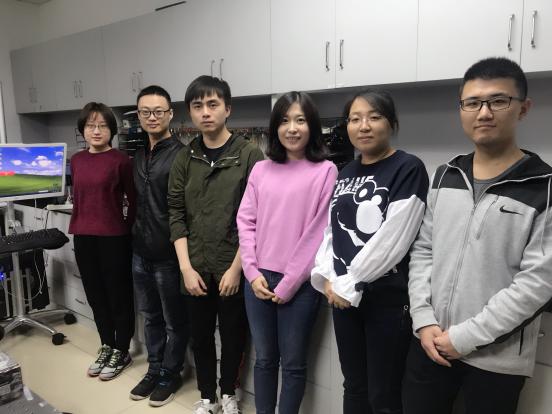Since the discovery of the Nobel Prize-winning graphene, low-dimensional nanomaterials, particularly black phosphorus (BP), have been extensively investigated by a great number of researchers worldwide. Recently, an interdisciplinary team of researchers from four universities published a breakthrough in Nature Communications about the inkjet printing of BP, which is expected to bring BP-based photonic and optoelectronic devices into reality. For a closer look at this work, Dr. Meng Zhang, an associate professor of the School of Electronic and Information Engineering, Beihang University as well as a corresponding author of the research, was interviewed to give a detailed introduction.

As a post-graphene material, BP shows extraordinary properties, such as high carrier mobility and thickness-dependent direct band gap, in the production of novel lasers and optoelectronic devices. Its application has been hindered, however, by its complicated fabrication and poor environmental stability. To solve this problem, a collaborative research team led by Beihang University and the University of Cambridge, along with the assistance from Imperial College London and Zhejiang University, developed an innovative approach of BP inkjet printing.
Researchers in Cambridge produced the stable BP ink by optimizing the chemical composition and balancing complex and competing fluidic effects. The ink enabled the production of new functional optoelectronic devices by high-speed printing with excellent print quality and uniformity. The research team led by Dr. Zhang from Beihang University optimized the design of ultrafast lasers with the implementation of BP for femtosecond pulse generation, while researchers from Zhejiang University evaluated the performance of the BP-based devices by their photodetectors.
“Our nonlinear optical device design using BP achieves a significantly better performance and operational stability than any other previous demonstration,” said Dr. Zhang, who began this three-and-a-half-year study when she was a postdoctoral research fellow majoring in photonics at Imperial College London.
Printed BP-based nonlinear optical devices can act as ultrafast optical switches in lasers, converting a continuous beam of laser radiation into a steady-state pulse train that finds numerous applications in basic laboratory research and industry, such as machining, drilling, imaging and sensing. BP can also be made into efficient and highly-responsive detectors, extending the wavelength range beyond where conventional silicon-based photodetectors can achieve.

Dr.Zhang and her students
According to Dr. Zhang, a key factor in the success of this research is the international collaboration among researchers from different countries and fields, and Beihang University has provided great support for her research. The university has been developing its international and interdisciplinary platform with a series of policies including the Supporting Method of the Postdoctoral Fellows of Beihang “Zhuoyue” Program that brought Dr. Zhang here, connecting Beihang to domestic and overseas cutting-edge research teams.
Talking about the next step, Dr. Zhang intends to expand the range of ink of BP and apply the inkjet printing technology to other graphene-like materials. With researchers like her, Beihang will remain committed to fostering cutting-edge interdisciplinary studies and multilateral cooperation in the future.
For more information of the research:
https://www.nature.com/articles/s41467-017-00358-1
Planned and written by Jinxing Zhang and Rui Jin
Edited and translated by Mingzhu Li
Designed by Chenyan Wang
Thanks to the School of Electronic and Information Engineering and Dr. Meng Zhang
Reviewed by GEOOS
Please send contributions togeoos@buaa.edu.cn

